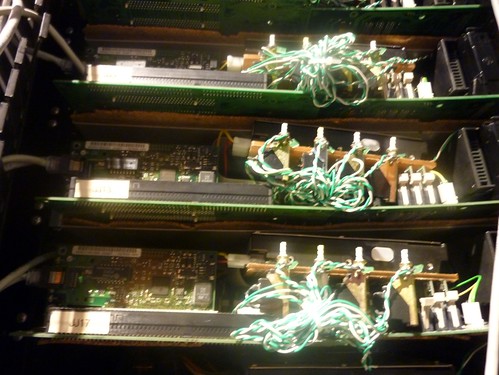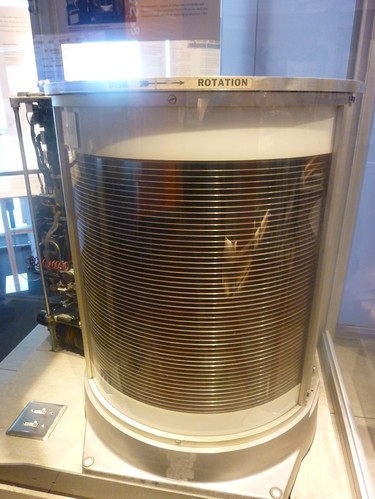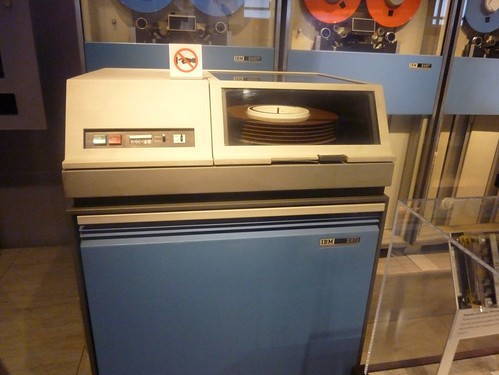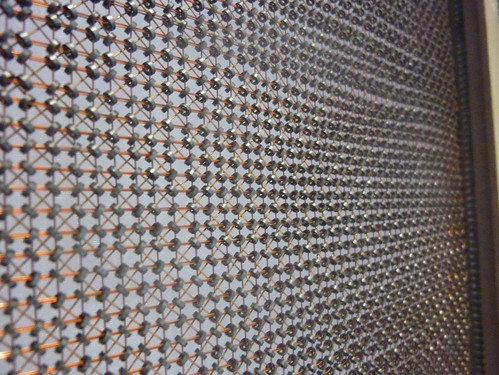Full Nerd II: Nerd Harder
It seems that people really enjoyed my post about the computer history museum. At the time I wrote it, I was worried that it might constitute just a little bit too much nerd, so I held back on my initial impulse to put in more pictures and gush enthusiastically about how awesome it all was.
With hindsight, perhaps I can afford to ignore that particular mental stopcock, at least for a little while. I do not, I regret to tell you, have anymore pictures of the teapot. I do intend to buy myself a Melitta teapot at some point quite soon, however, so that it may sit in my flat and act as a most nerdy in-joke.
"Tea, anyone?"
"Yes, please."
Pause.
"Why are you grinning like that?"
I do, however, have pictures of many other fun things. Let's start with a reference to my current employer:

This is one of the original Google server racks. At one point, if you typed a query into the Google homepage, this is where the magic happened. If you have any familiarity at all with how servers usually look, you might be scratching your heading and thinking that this one does not look entirely right. Let me help you with that:

Yes, you can see all of the components. No, that is not normal. Yes, each individual server would normally have its own case. No, under normal circumstances sheets of cardboard would not be used as the insulation between motherboard and shelf. Yes, that is an awful lot of servers to fit into a single rack. Yes again, that would require very good air circulation, but you'll have a bloody difficult time finding a case that gives better circulation than no case at all. No, you would not expect a server to bow in the middle like that...
Two things the early Google was known for: providing the best search results; and being very, very frugal when it came to equipment purchasing.
Let's talk about something a bit more fundamental, though. Hard disks, for example. The one in the computer I'm writing this on has a capacity of around 120 GB (depending on how you measure a giga byte, but that's a different story). Wikipedia tells me that is measures around 69.85 mm × 15 mm × 100 mm, so quite small. This is also a hard drive:

Assuming I haven't gotten mixed up here somewhere, this is the worlds first hard disk, and is made up of 50 24" disks, holding a grand total of 5 million characters. Now, if each of those characters is a one byte ASCII character (or similar) that's approximately 5 MB, or 0.005 GB. Quite the difference in storage density, no?
Here's a (slightly) more recent example of a hard disk, one which I'm told is actually still in use to some extent:

Now, if my understanding is correct, this next piece looks like a hard drive, but is much closer in function to RAM:

What's particularly neat is that it's based on an original design by the regrettably late, extremely great, and utterly brilliant Alan Turing.
The museum has an entire section devoted to the evolution of storage, and it's quite fascinating. Another of the forebears of modern RAM is magnetic core memory, which looks like this:

Now that's quite cool, but I'd say that it's also quite pleasing to the eye. I think I'd happily frame that, mount it, and have it hanging from the wall in my flat (somewhere close to the teapot). People walk through castles and talk in hushed tones of all the many things "these stones" have seen. All of the stories they might tell, if they could only speak. But this... unlike your average rock, this is unquestionably memory, and memory which lived through very exciting times in the development of our society. Here's something I look at and wonder what stories it might be able to tell, and what stories it has been forced to forget.
There are many things at the Computer History Museum which are very cool and certainly raise a smile (as well as an appreciative thought as to how far things have come). There are also things which just plain stop you in your tracks; the Difference Engine, for example. Well, at the risk of repeating myself, I'm going to post another picture of it, this time from the other side, so you can see a little bit more of the mechanism:

Now there's a thing I would really and truly love to have in my flat. Ideally in a more coffee table friendly size, of course.